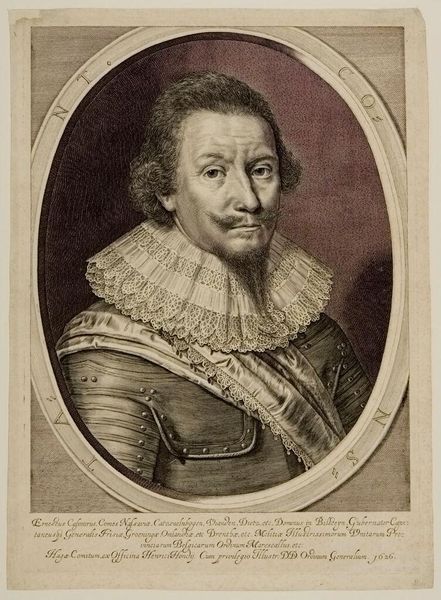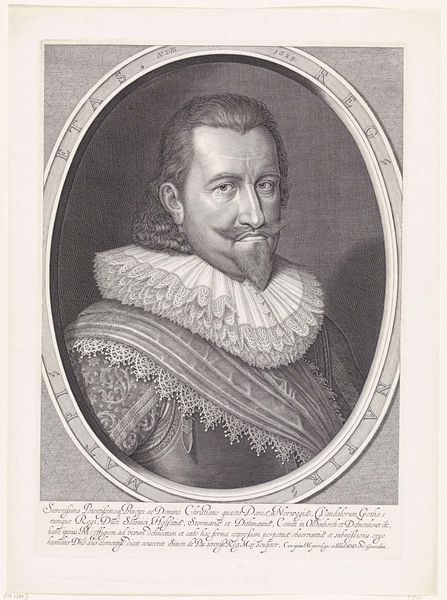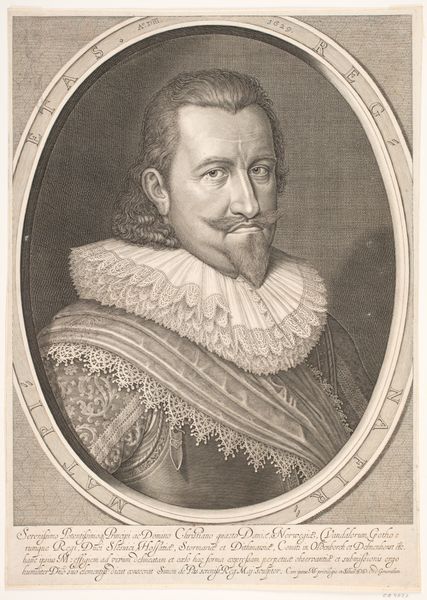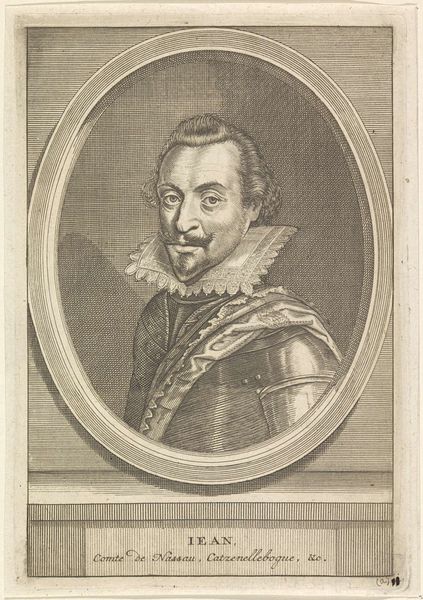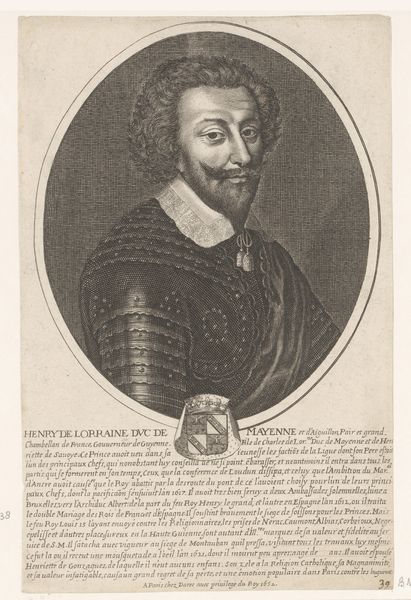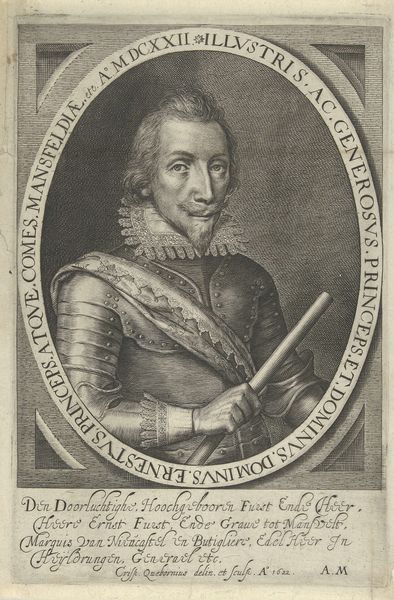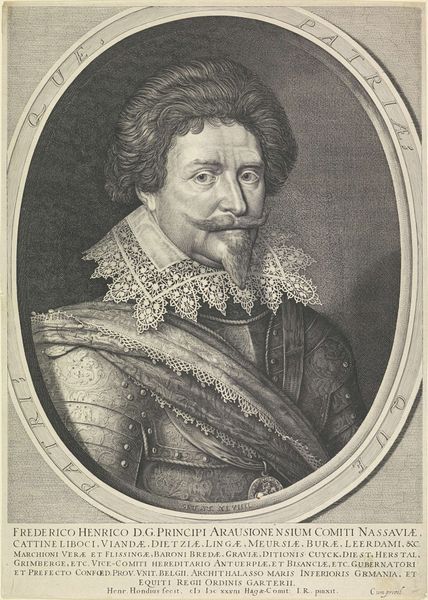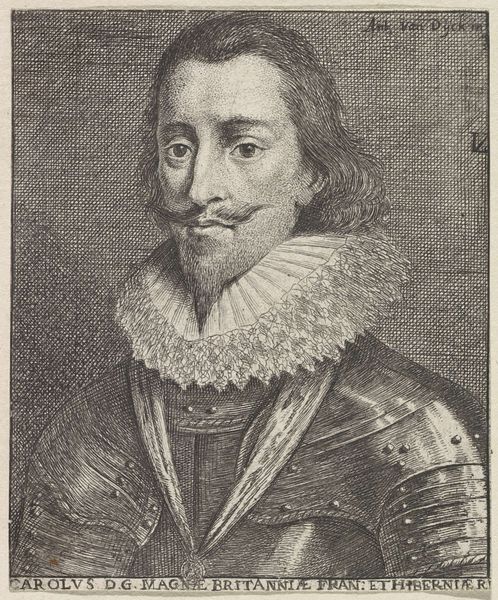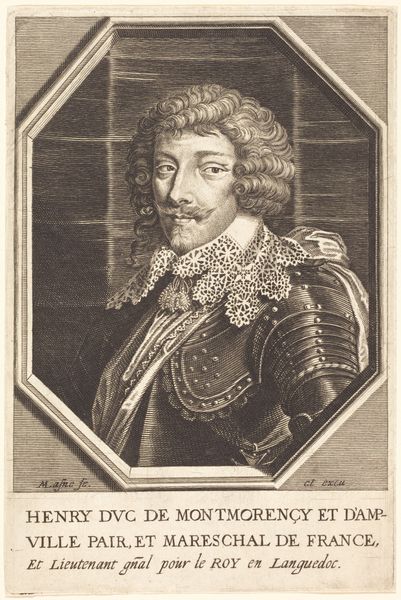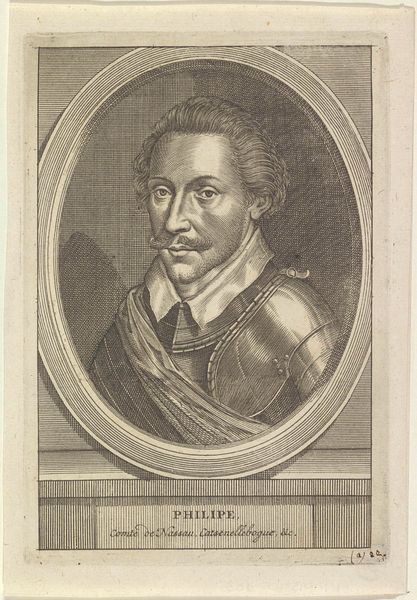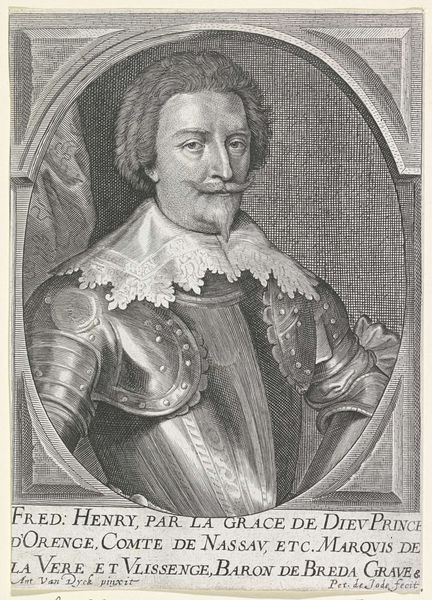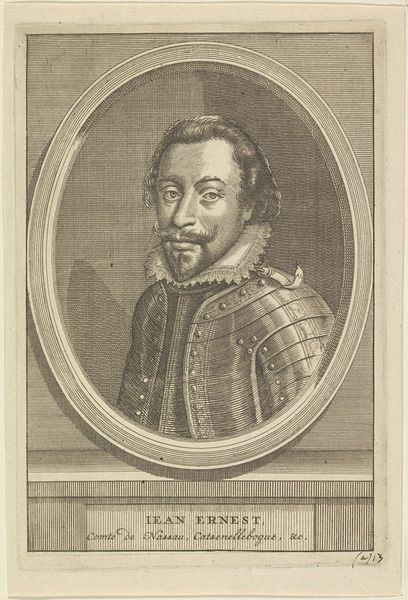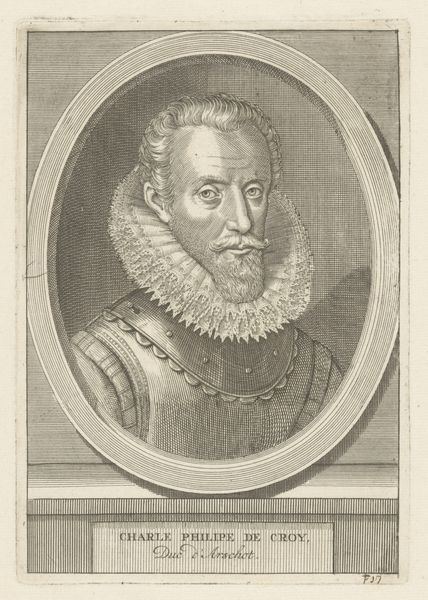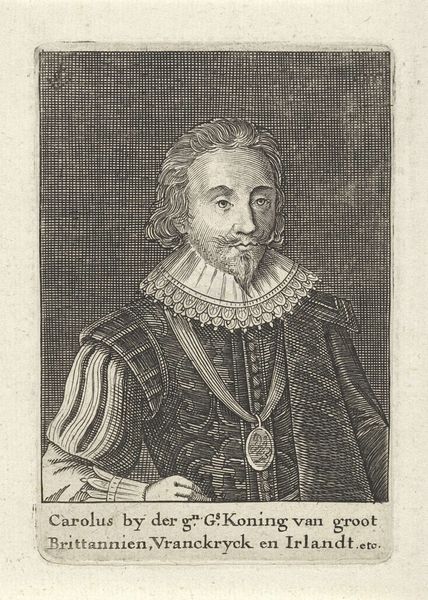
print, engraving
#
portrait
#
baroque
#
dutch-golden-age
# print
#
old engraving style
#
19th century
#
portrait drawing
#
engraving
Dimensions: height 422 mm, width 296 mm
Copyright: Rijks Museum: Open Domain
Editor: Here we have Hendrick Hondius I’s engraving from 1626, "Portret van Ernst Casimir, graaf van Nassau-Dietz." The detail achieved through this medium is just incredible; it really shows in the armor and the lace collar. What stands out to you about this work? Curator: Well, let’s think about what an engraving actually *is*: a mechanical, reproducible image. Here we have a member of the elite class, yes, but captured via a method of production that’s becoming increasingly democratized. How does that tension affect our reading of the image, do you think? Is this *really* about preserving the likeness of a nobleman, or is it more about the labor required to *make* this image accessible? Editor: That's an interesting point. I hadn't considered the labor aspect. Does the fact that it’s a print influence its status, then? Does it take away from the idea of it being a unique artwork? Curator: Absolutely. Prints occupied an interesting space. They could be collected and distributed much more easily than paintings, shifting the economics of art consumption. Consider also, the material Hondius is working with: metal. The choice to carve into this hard, unforgiving surface is itself significant. Editor: So, focusing on the material changes how we understand even a portrait like this? It stops being *just* a portrait. Curator: Precisely! The act of reproduction, the inherent multiplicity of the engraving process – it fundamentally alters our relationship to the subject and the image itself. It’s not just about who is represented, but *how* and for whom. Editor: This has really made me rethink my initial approach! Looking beyond just the image itself and understanding the means of production makes a huge difference. Curator: Exactly! Paying attention to material and process can unlock all sorts of hidden meanings within a work.
Comments
No comments
Be the first to comment and join the conversation on the ultimate creative platform.
